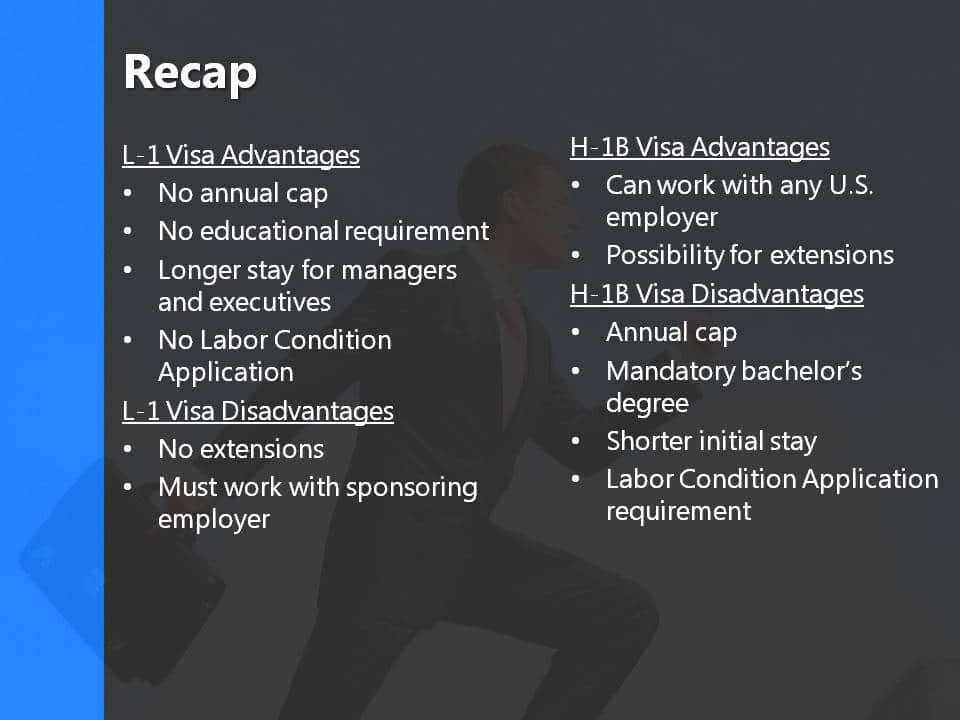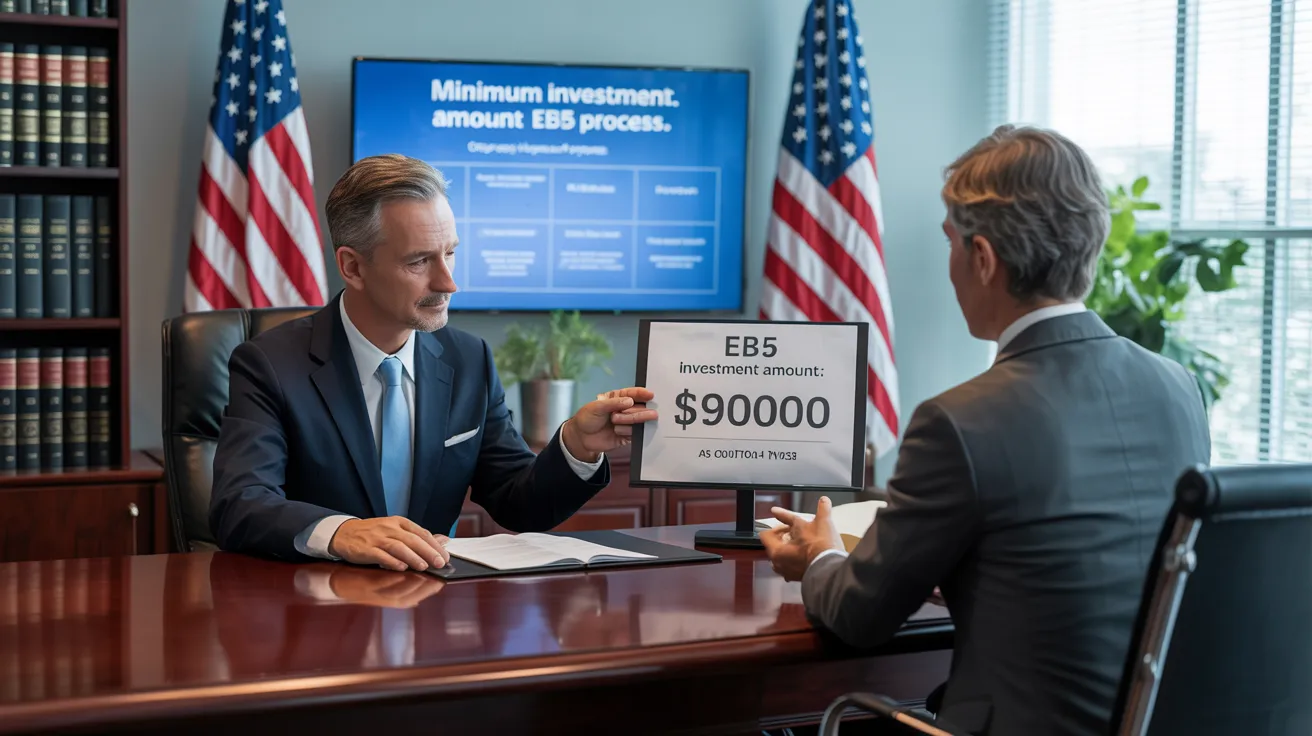L1 Visa - Truths
Table of ContentsThe 8-Second Trick For L1 VisaRumored Buzz on L1 VisaLittle Known Facts About L1 Visa.L1 Visa Can Be Fun For EveryoneSome Known Factual Statements About L1 Visa An Unbiased View of L1 Visa
Available from ProQuest Dissertations & Theses Global; Social Science Premium Collection. (2074816399). (PDF). Congress. (PDF). DHS Workplace of the Examiner General. (PDF). (PDF). "Nonimmigrant Visa Data". Retrieved 2023-03-26. Department of Homeland Safety And Security Workplace of the Examiner General, "Testimonial of Vulnerabilities and Possible Abuses of the L-1 Visa Program," "A Mainframe-Size Visa Technicality".
United State Department of State. Recovered 2023-02-08. Tamen, Joan Fleischer (August 10, 2013).
5 Simple Techniques For L1 Visa
In order to be qualified for the L-1 visa, the foreign company abroad where the Recipient was utilized and the U.S. firm need to have a qualifying partnership at the time of the transfer. The different kinds of qualifying partnerships are: 1. Parent-Subsidiary: The Parent implies a firm, firm, or other lawful entity which has subsidiaries that it owns and manages."Subsidiary" implies a firm, corporation, or various other lawful entity of which a moms and dad owns, straight or indirectly, more than 50% of the entity, OR has much less than 50% yet has monitoring control of the entity.
Instance 1: Business A is integrated in France and employs the Recipient. Firm B is incorporated in the united state and desires to petition the Beneficiary. Business A possesses 100% of the shares of Company B.Company A is the Parent and Business B is a subsidiary. Consequently there is a certifying connection in between the 2 companies and Company B ought to have the ability to fund the Recipient.
Example 2: Company A is included in the united state and desires to seek the Recipient. Business B is included in Indonesia and uses the Recipient. Firm A possesses 40% of Firm B. The remaining 60% is owned and controlled by Company C, which has no relation to Company A.Since Firm A and B do not have a parent-subsidiary partnership, Firm A can not fund the Beneficiary for L-1.
Instance 3: Firm A is integrated in the U.S. and wants to petition the Recipient. Business B is integrated in Indonesia and utilizes the Beneficiary. Company An owns 40% of Business B. The staying 60% is owned by Company C, which has no relationship to Business A. However, Firm A, by official arrangement, controls and full handles Company B.Since Firm A possesses much less than 50% of Business B but takes care of get started and controls the firm, there is a certifying parent-subsidiary partnership and Company A can sponsor the Recipient for L-1.
The Main Principles Of L1 Visa
Affiliate: An associate is 1 of 2 subsidiaries thar are both owned and managed by the same parent or person, or possessed and regulated by the exact same group of people, in essentially the same ratios. a. Example L1 Visa requirements 1: Company A is integrated in Ghana and employs the Beneficiary. Business B is included in the united state
Firm C, additionally incorporated in Ghana, owns 100% of Business A and 100% of Firm B.Therefore, Company A and Company B are "associates" or sister firms and a certifying relationship exists between the two companies. Company B should be able to sponsor the Beneficiary. b. Example 2: Business A is integrated in the U.S.
Company A is 60% owned by Mrs. Smith, 20% possessed by Mr. Doe, and 20% had by Ms. Brown. Company B is integrated in Colombia and presently utilizes the Beneficiary. Business B is 65% owned by Mrs. Smith, 15% owned by Mr. Doe, and 20% possessed by Ms. Brown. Business A and Company B are affiliates and have a certifying partnership in two different ways: Mrs.
The L-1 visa is an employment-based visa classification developed by Congress in 1970, allowing international companies to transfer their supervisors, executives, or crucial personnel to their U.S. operations. It is frequently referred to as the intracompany transferee visa.

In addition, the recipient has to have operated in a supervisory, exec, or specialized staff member placement for one year within the 3 years coming before the L-1A application in the foreign company. For brand-new office applications, foreign employment has to have remained in a managerial or executive capability if the recipient is pertaining to the United States to work as a supervisor or executive.
Some Known Questions About L1 Visa.

If approved for an U.S. company functional for greater than one year, the first L-1B visa is for up to three years and can be prolonged for an extra two years (L1 Visa). Alternatively, if the U.S. company is recently developed or has been functional for much less than one year, the initial L-1B visa is provided for one year, with expansions available in two-year increments
The L-1 visa is an employment-based visa group established by Congress in 1970, allowing international business to transfer their supervisors, executives, or essential workers to their united state procedures. It is commonly described as the intracompany transferee visa. There are 2 primary kinds of L-1 visas: L-1A and L-1B. These kinds are appropriate for employees hired in various settings within a firm.
Get This Report about L1 Visa
In addition, the recipient should have operated in a supervisory, exec, or specialized worker setting for one year within the 3 years coming before the L-1A application in the international firm. For new workplace applications, international work needs to have been in a supervisory or executive ability if the recipient is pertaining to the United States to function as a supervisor or exec.
for approximately seven years to manage the operations of the united state affiliate as an executive or supervisor. If released for a united state firm that has actually been operational for greater than one year, the L-1A visa is initially provided for up to three years and can be prolonged in two-year increments.
If granted for a united state firm functional for greater than one year, the initial L-1B visa is for approximately 3 years and can be expanded for an added 2 years. Alternatively, if the united state company is freshly established or has actually been operational for much less than one year, the initial L-1B visa is provided for one year, with expansions readily available in two-year increments.